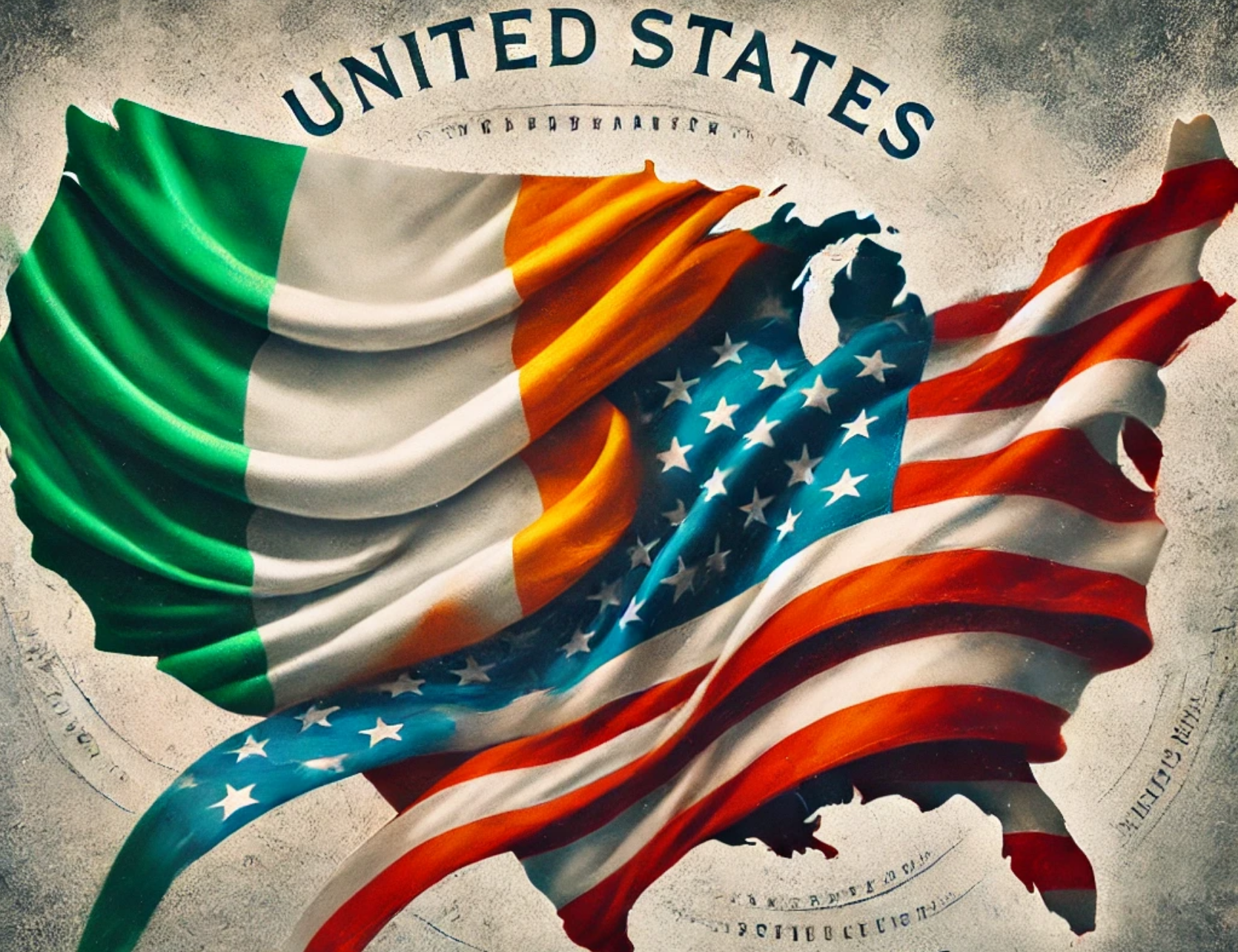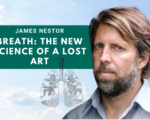The True Spirit of Irish Ancestry: Beyond Green Beer and Parades
Saint Patrick’s Day has long been a day of celebration for the Irish diaspora, especially in the United States of America. But for many, the holiday has been reduced to stereotypes such as shamrocks, leprechauns, and excessive drinking, rather than a reflection on the deep history, struggles, and resilience of the Irish people. To truly honor Irish ancestry, Irish Americans ought to look beyond the surface-level festivities and reconnect with the spirit of those who came before them. Especially the values of figures like Daniel O’Connell, who championed justice, equality, and solidarity with the oppressed.
Saint Patrick’s Day: More Than a Celebration
For many, Saint Patrick’s Day is a time of pride and celebration. It’s a day where Irish Americans connect with their roots, parade through cities, and don green attire, but the true essence of the holiday is not in the festivities. The true essence of the holiday is in the reflection of what it means to be Irish. Irish history is not one of unchecked triumph, but of perseverance through colonialism, famine, and mass displacement. Understanding this history should be the foundation of how the Irish diaspora celebrates the day.
While reveling in Irish identity, it is essential to consider the deeper implications of the celebration. Saint Patrick himself was an immigrant to Ireland, taken as a slave before becoming one of its most enduring symbols. If Irish Americans wish to truly embody the spirit of their ancestry, they must reflect on the narratives of displacement, resilience, and justice that define their lineage.
Daniel O’Connell’s Vision: A Legacy of Justice
Daniel O’Connell, often hailed as “The Liberator,” holds a distinguished place in Irish history for his relentless advocacy for civil rights and national sovereignty during the 19th century. His endeavors not only redefined the political landscape of Ireland, but he also left an enduring mark on its cultural and social fabric.
Born on August 6, 1775, near Cahirciveen in County Kerry, Ireland, O’Connell hailed from a Catholic family during a period when the Penal Laws severely restricted the rights of Irish Catholics. These laws curtailed various civil liberties, including land ownership, education, and participation in the political sphere. O’Connell pursued legal studies in London and was called to the Irish bar in 1798. His legal acumen and eloquence soon positioned him as a formidable advocate for the disenfranchised, using the courtroom as a platform to challenge injustices.
O’Connell’s most celebrated achievement was his leadership in the movement for Catholic Emancipation. In 1823, he founded the Catholic Association, aiming to secure equal rights for Catholics, particularly the right to sit in the British Parliament. Employing peaceful mass mobilization tactics, O’Connell organized “monster meetings,” drawing thousands to advocate for their rights. His efforts culminated in the passage of the Catholic Emancipation Act in 1829, allowing Catholics to become Members of Parliament without renouncing their faith.
Beyond religious emancipation, O’Connell sought the repeal of the 1801 Act of Union between Great Britain and Ireland, which had dissolved the Irish Parliament. He established the Repeal Association, campaigning for the restoration of an independent Irish legislature. Through peaceful means, he galvanized support across Ireland, though this particular goal remained unfulfilled during his lifetime.
O’Connell’s commitment to non-violent protest and his successes in advancing civil rights have cemented his status as a national hero in Ireland. His legacy is honored through various memorials, including Dublin’s main thoroughfare, O’Connell Street, named in his honor. Biographers suggest that his blend of religious advocacy and liberal principles foreshadowed modern European Christian democracy.
Through his unwavering dedication to justice and equality, Daniel O’Connell not only transformed the political landscape of his time but also inspired future generations to pursue civil rights through peaceful means.
Frederick Douglass and the Irish: A Shared Struggle
Frederick Douglass’s stay in Ireland from 1845 to 1846 was a transformative period that significantly influenced his perspectives on freedom, equality, and human rights. This experience not only provided him with a respite from the pervasive racism of the United States, but it also deepened his understanding of global struggles against oppression.
In August 1845, following the publication of his autobiography, Narrative of the Life of Frederick Douglass, an American Slave, Douglass embarked on a tour of the British Isles to promote his work and further the abolitionist cause. He arrived in Dublin on August 31, 1845, at a time when Ireland was on the brink of the Great Famine.
During his four-month stay, Douglass traveled extensively, delivering lectures in cities such as Dublin, Wexford, Waterford, Youghal, Cork, Limerick, and Belfast. His eloquence and firsthand accounts of slavery drew large audiences, often filling venues to capacity. The Irish public, many of whom were themselves experiencing severe hardship, empathized with Douglass’s narratives of suffering and resilience.
One of the most profound aspects of Douglass’s time in Ireland was the contrast in racial attitudes compared to the United States. He expressed astonishment at being treated without the racial prejudice that was rampant in America. In his writings, Douglass reflected on this newfound sense of dignity:
“I gaze around in vain for one who will question my equal humanity, claim me as his slave, or offer me an insult.”
This treatment allowed Douglass to experience life without the constant burden of racial discrimination, reinforcing his belief in the universality of human rights.
Bernadette Devlin: A Legacy of Solidarity
Bernadette Devlin McAliskey, a prominent figure in the Northern Irish civil rights movement, demonstrated profound solidarity with African Americans during her 1969 tour of the United States. Invited to raise awareness and funds for the Irish cause, she utilized this platform to draw parallels between the struggles of Irish Catholics and African Americans.
During her visit to New York City, Mayor John Lindsay honored Devlin by presenting her with the key to the city. However, disheartened by the prejudiced attitudes she observed among some Irish Americans toward Black communities, Devlin chose to make a poignant statement. She entrusted the key to fellow activist Eamonn McCann, who then presented it to Robert Bay of the Black Panther Party, symbolizing her solidarity with the Black liberation movement.
Devlin’s commitment to civil rights extended beyond symbolic gestures. In Detroit, she refused to take the stage until African Americans, who had been barred from the event, were allowed entry. She also met with members of the Black Panther Party in Watts, Los Angeles, offering them her support. These actions underscored her belief in the interconnectedness of global struggles against oppression.
Through these endeavors, Devlin highlighted the shared experiences of marginalized communities and emphasized the importance of cross-cultural solidarity in the fight for justice and equality.
Devlin, like O’Connell, saw the intrinsic link between Irish oppression and the global fight against racism and colonialism. Her actions challenged Irish Americans to examine their role in justice movements and to ensure that their heritage was one of inclusion rather than division.
The Racist Depictions of the Irish: Topographia Hibernica
The negative stereotyping of the Irish by Anglo-Europeans has deep roots, exemplified in the 12th-century text Topographia Hibernica by Gerald of Wales. Written around 1188, this work offers an account of Ireland’s landscape and people, but it is marred by dehumanizing portrayals that played a significant role in justifying English colonial rule over Ireland.
Gerald’s descriptions painted the Irish as a people resistant to progress, living in primitive conditions, and lacking the supposed refinement of English society. He depicted them as barbaric and uncivilized, reinforcing the perception that the Irish were incapable of self-governance. These narratives laid the ideological foundation for centuries of oppression and discrimination.
Centuries later, these dehumanizing stereotypes were further perpetuated through pseudoscientific practices like craniometry and phrenology. In the 19th century, physicians measured skulls to investigate racial origins, often to support notions of European superiority. For instance, Victorian anthropologist Alfred Haddon conducted skull measurements in western Ireland, aiming to trace the racial origins of isolated communities.
These practices were part of a broader anthropometric movement that sought to classify human populations based on physical characteristics, often to justify racial hierarchies. Such pseudoscientific methods contributed to the marginalization and discrimination of the Irish, as they were portrayed as racially inferior.
This historical precedent is central to understanding how the Irish were once viewed as an inferior race, which is something Irish Americans should remember when considering issues of race and discrimination today.
True Irish pride isn’t found in green beer or novelty hats. True Irish pride is found in standing for justice, much like O’Connell and Devlin did. It’s about carrying forward the legacy of those who suffered, struggled, and resisted so that future generations could have something better. Irish Americans have a unique opportunity to reclaim the meaning of their heritage by advocating for the oppressed, just as their ancestors did, rather than engaging in shallow revelry that ignores the deeper story of Irish resilience.
As St. Patrick’s Day comes and goes, the question remains: How will Irish Americans choose to honor their ancestry? By perpetuating stereotypes, or by embodying the spirit of those who fought for justice? The answer will determine whether the legacy of the Irish is truly remembered, or merely reduced to a caricature.










Amazing read. One of the most throughly researched pieces.